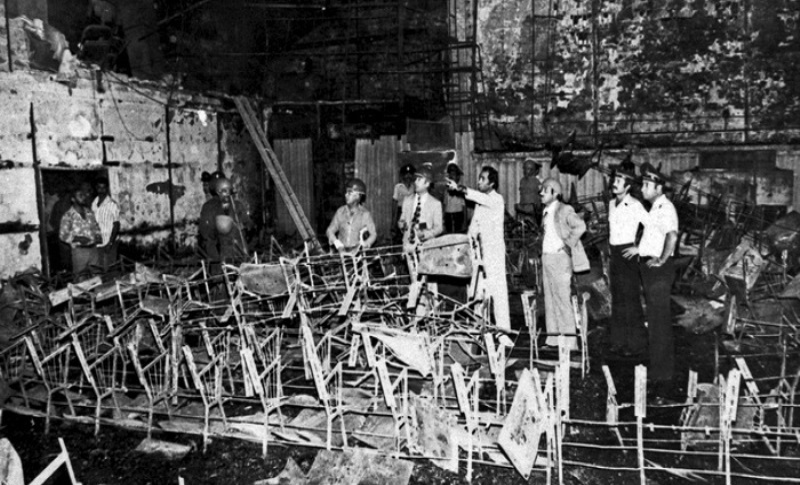Summary | Excerpt | Reading Guide | Reviews | Beyond the Book | Read-Alikes | Genres & Themes | Author Bio

This article relates to The Lion Women of Tehran
 In the southwest of Iran lies a city called Abadan, over five hundred miles from the country's capital of Tehran, with a population of a little over 200,000. Despite its relatively quiet presence, it played a crucial role in sparking the Iranian Revolution of 1979. On August 19, 1978, Cinema Rex, a movie theater located in a working-class district of the city, was burned down with the doors locked from the outside during a screening of The Deer (Gavaznha), resulting in the deaths of around 400 civilians. To understand the context of this terrorist attack and those responsible, we have to look at the preceding years in the Iranian government, and the social unrest that resulted from them.
In the southwest of Iran lies a city called Abadan, over five hundred miles from the country's capital of Tehran, with a population of a little over 200,000. Despite its relatively quiet presence, it played a crucial role in sparking the Iranian Revolution of 1979. On August 19, 1978, Cinema Rex, a movie theater located in a working-class district of the city, was burned down with the doors locked from the outside during a screening of The Deer (Gavaznha), resulting in the deaths of around 400 civilians. To understand the context of this terrorist attack and those responsible, we have to look at the preceding years in the Iranian government, and the social unrest that resulted from them.
In 1953, the democratically elected Prime Minister Mohammed Mosaddegh was overthrown by the Iranian army, backed by the US and the UK. (Mosaddegh had recently broken off negotiations with the UK over Iran's oil supply in an effort to nationalize the country's oil industry—the UK, fearing a loss of profits, appealed to the US for help, at which time President Roosevelt staged a plot to oust Mosaddegh.) This successful coup resulted in a strengthening of power for the country's Shah, Mohammed Reza Pahlavi.
In the 1960s, the Shah implemented a series of reforms called the White Revolution, which endeavored to improve numerous industries in Iran. The White Revolution drew criticisms both from those who believed the reforms were not moving fast enough and those who resented the country's Westernization. The Shah formed a secret police force, called SAVAK, which suppressed dissent and made it impossible to speak publicly against the government.
When Cinema Rex was burned down in 1978, chaos ensued. The government was quick to blame its opposition, and opposition groups were quick to blame the Shah, claiming the attack was staged by SAVAK to frame them. The Abadan police detained ten opposition members, and eventually five of them confessed to responsibility for the fire.
However, the opposition continued to accuse government forces of starting the fire, and the Cinema Rex attack contributed to cementing a strong anti-Shah sentiment among the people of Iran. In this period of mistrust and disinformation, religious extremist Ayatollah Ruholla Khomeini capitalized on the Cinema Rex fire, claiming that the victims were martyrs who "watered the roots of the tree of Islam with their blood." Khomeini would go on to seize power after the Iranian Revolution of 1979 resulted in the deposition of the Shah. His theocratic reign was a notorious one, which stripped Iranian citizens of their rights and alienated non-Muslim Iranians.
The Cinema Rex attack, depicted in Marjan Kamali's novel The Lion Women of Tehran, was at the time the deadliest terrorist attack in modern history, and remains one of deadliest. The exact death toll is disputed, but the number of victims is estimated to have been as high as 470.
The inside of the Cinema Rex after the fire (1978), via Wikimedia Commons
Filed under People, Eras & Events
![]() This article relates to The Lion Women of Tehran.
It first ran in the December 4, 2024
issue of BookBrowse Recommends.
This article relates to The Lion Women of Tehran.
It first ran in the December 4, 2024
issue of BookBrowse Recommends.
Your guide toexceptional books
BookBrowse seeks out and recommends the best in contemporary fiction and nonfiction—books that not only engage and entertain but also deepen our understanding of ourselves and the world around us.